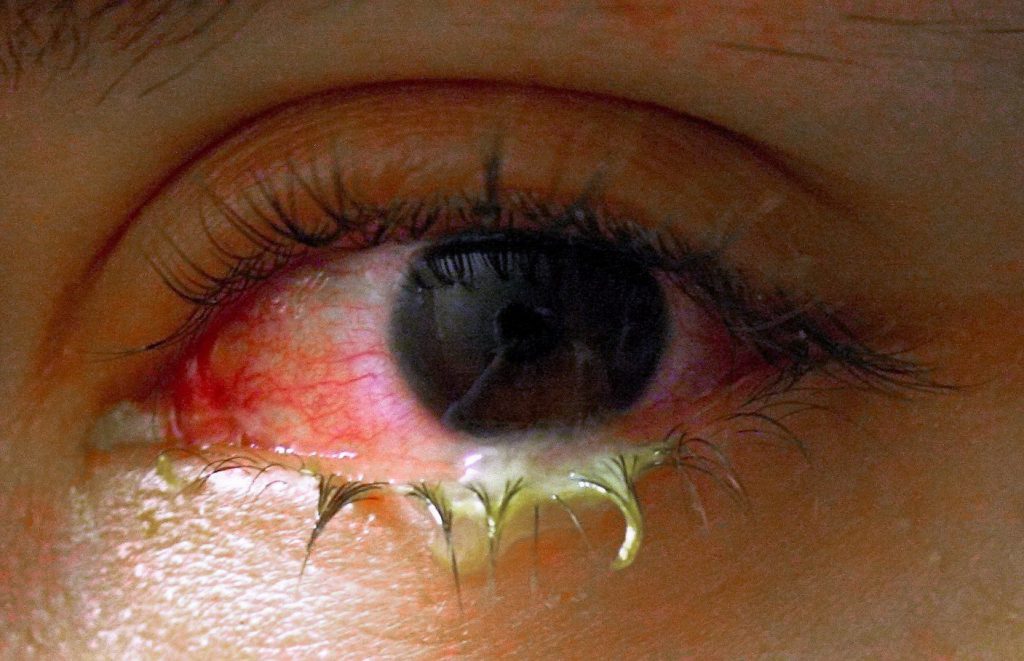Did you know that a routine eye exam can detect signs of Lyme disease? This tick-borne illness, spread by the bacterium Borrelia burgdorferi, starts as a rash and can lead to a wide variety of symptoms, such as joint pain and fatigue. If untreated, the infection can reach your heart, nervous system, and eyes.
Understanding What Lyme Disease Is

Lyme disease is transmitted to humans via a bite from an infected black-legged tick and is caused by the bacterium Borrelia burgdorferi. Symptoms of this disease typically appear between one day to a month after the tick bite and may include a rash, joint pain, headaches, and other ailments. Later stages of Lyme disease are characterized by arthritic pain, cognitive difficulties, fatigue, and other complications that can significantly impact a person’s life.
How Lyme Disease Affects the Eyes
As Lyme disease progresses, it can cause inflammation in various parts of the eye, such as the cornea, iris, and blood vessels. This infection can result in a variety of eye problems, including:
Photophobia
People with Lyme disease may experience increased sensitivity to light, known as photophobia. This sensitivity is different from the brief momentary discomfort felt when transitioning from a dark environment to a brightly lit one. Photophobia can be very severe, leading to constant pain and discomfort while affecting daily activities.
Optic Neuritis
Lyme disease can lead to inflammation in the optic nerve, known as optic neuritis. This nerve is responsible for transmitting visual information to the brain, and eye pain is a common symptom associated with it.
Retinal Vasculitis
Lyme disease can cause systemic inflammation, affecting the retina’s blood vessels. This type of inflammation of the retinal blood vessels is known as retinal vasculitis. It can cause damage to the blood vessel walls, resulting in narrowing or weakening, which can lead to reduced vision.
The retina is a thin layer of tissue that forms the innermost part of the eye. It is responsible for transforming light into signals that are sent to the brain, and is supplied with oxygenated blood via its own intricate network of vessels. When both are impacted by inflammation due to Lyme disease, it can take a toll on your vision. Symptoms of retinal vasculitis include blurred vision, flashes of light, floaters, shadows, and reduced peripheral vision.
Conjunctivitis

Conjunctivitis, commonly known as “pink eye,” is a form of inflammation affecting the eye’s white part called the conjunctiva. This can usually occur within the first few weeks following an infection with Lyme disease and affects around 10% of people with the condition. Symptoms of conjunctivitis include red eyes, itching, and discharge.
Treatment
Treating Visual Problems
Medical treatment for Lyme disease may not always address any visual issues, leaving the patient with impaired vision even after treatment. Any part of the body can experience inflammation and can negatively impact nearby systems and organs, including the brain and visual pathways often affected by Lyme disease.
Neuro-optometry is a form of assessment that looks into how our eyes and brain work together. When Lyme disease disrupts this connection, it can cause balance problems, leading to weakened vision and depth perception.
A neuro-optometrist may use lenses, prisms, or in some cases, neuro-visual therapy to treat a patient. Neuro-visual therapy is a form of rehabilitation designed to help those who have suffered from a neurological incident that has impaired their vision and its processing. This is especially important for children as Lyme disease can disturb essential developmental progressions, leading to visual problems and potential delays in development or cognitive difficulties.
How to Avoid Lyme Disease
- Take the time to do a complete tick check after spending time outdoors.
- Carry out inspections on yourself, your children, and pet and remove any ticks that you may find immediately.
- Ensure that you have good lighting and be mindful of potential places where it may be more difficult to spot ticks, such as armpits, belly button, groin, behind the knees, and parts of clothing that are tightened to the body (e.g. watch straps and underwear elastics) and also in the hair. In addition, it may be even harder to detect ticks on darker skin or with lots of freckles or moles.
- Do not assume that there is only one tick if you find one – there could be more.
- A bath shortly after coming inside is a great way to detect ticks.
- Treat shoes, clothing, and gear with 0.5% permethrin.
- To protect yourself from insect bites, use insect repellents containing DEET, picaridin, IR3535, oil of lemon eucalyptus, para-menthane-diol, or 2-undecanoate.
- Choose light-colored clothing to help you spot ticks that might be crawling on it.
- Keep ticks away by tucking your shirt into your pants and your pants into your socks.
- Launder clothing worn outdoors and tumble dry on a hot cycle to kill ticks. Check backpacks, towels, or other items that may have come into contact with vegetation outside.It’s wise to also use a buddy system, where someone can check you for ticks on your back and through your hair. In addition, a secure place to undress helps to contain any ticks from spreading through your household.
Relieve Your Symptoms of Lyme Disease
WAVE 1
Experience the user-friendly, bioenergetic WAVE 1 that delivers frequencies through light to help restore and balance cellular communication, improve overall immunity, and lessen the symptoms of Lyme and co-infections. WAVE 1 frequency programs delivered as inaudible sound waves via light, create a harmonious impact on cell signaling helping your organs, brain, eyes and other critical operations in your body to work more optimally. Many WAVE 1 users report strengthened eyesight and the ability to read more clearly and regularly while doing everyday tasks such as banking and reading for pleasure. Check out some videos from this site to learn more about how WAVE 1 helps lessen the symptoms of Lyme Disease.
Conclusion
Due to its complexity, Lyme Disease is a serious condition that can be difficult to manage and treat. It is essential to take the necessary precautions, such as performing tick checks and using appropriate insect repellents before venturing outdoors. Left untreated can lead to major complications such as impaired vision. If you have Lyme or have been diagnosed and you are having issues with impaired vision, these two options may be something to consider: neuro-optometry or neuro-visual therapy. Additionally, WAVE 1 technology may help lessen symptoms associated with the disease. Proactive and proper care by a medical practitioner should always be sought when managing a condition like Lyme Disease for best results.



